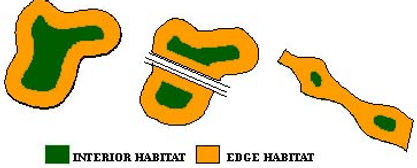Birds:
Birds are negatively impacted through light pollution through a variety of ways. Some species experience disruption in mating season timing, which in turn affects the conditions in which their offspring are exposed to. Blue Tit songbirds are breeding and hatching into an environment in which the peak food availability and peak food demand do not align, negatively impacting their ability to survive. Another issue seen by birds is the disruption of migration due to disorientation in nocturnally migrating species. When exposed to light pollution along a migration route the birds lose their ability to navigate properly. They lose precious energy reserved for their journey in their fight to find their way back to their path. In more serious cases, birds exposed to light that become disoriented are prone to hit buildings ultimately leading to their death.

Light Pollution & Terrestrial Species
Interview with Lisa Schreffler:
Lisa Schreffler is currently a graduate student and Professor here at George Mason Univeristy. She has in the past been a part of many research projects including several biodiversity surveys in Yukon National Wildlife Refuge. Currently, Lisa is a part of the Mason Bird Club which is currently surveying Mason's campus each morning for bird window strikes caused by light pollution. Here is a survey in which she sheds some light on how big of a problem light pollution is here at Mason, and what it means for the surrounding bird populations.
Amphibians:
Amphibians are known to be nocturnal creatures, safe and comfortable by the light of the moon and stars. Reproduction, foraging activity, and migrations all happen during the dark hours of night. By moonlight, many species of amphibian take part in a great migration every spring back to their breeding pools for mating. With artificial light interrupting this natural pattern, species are losing their ability to utilize the moon and stars for navigation due to the similar wave patterns both sources of light emit. Mating seasons have been altered from the introduction of artificial light. Males within the Green Frog species produce less mating calls and have more night movement, inhibiting their ability to mate. Migration to breeding pools and ability to breed are important ecological factors, crucial to the fitness and survival of species.

Mammals:
Mammals feel the negative impact from light pollution. An increase in light pollution disrupts mammalian species circadian rhythm. It pushes species out of habitat where they feel exposed and unsafe in the light, limited areas they can utilize. Beach Mice and Desert Mice have been found to avoid areas with bountiful food supply during night foraging hours in order to protect themselves from visibility in the night. Sugar Gliders have repressed night activity during night hours when presented with light pollution. These species fear predation when exposed in the light, showing why they evolved to have these particular behaviors in the first place. Barriers in movement aren’t only for prey species, but predators as well. Such as the Cougar, which limits its activity and movement. The edge effect is inevitable with light pollution, species staying out of the way of any possible harm, in turn limiting their habitat. Mammalian species feel threatened by light pollution, decreasing their ability to find food, disperse within their habitats, while increasing fear of exposure to predation.


